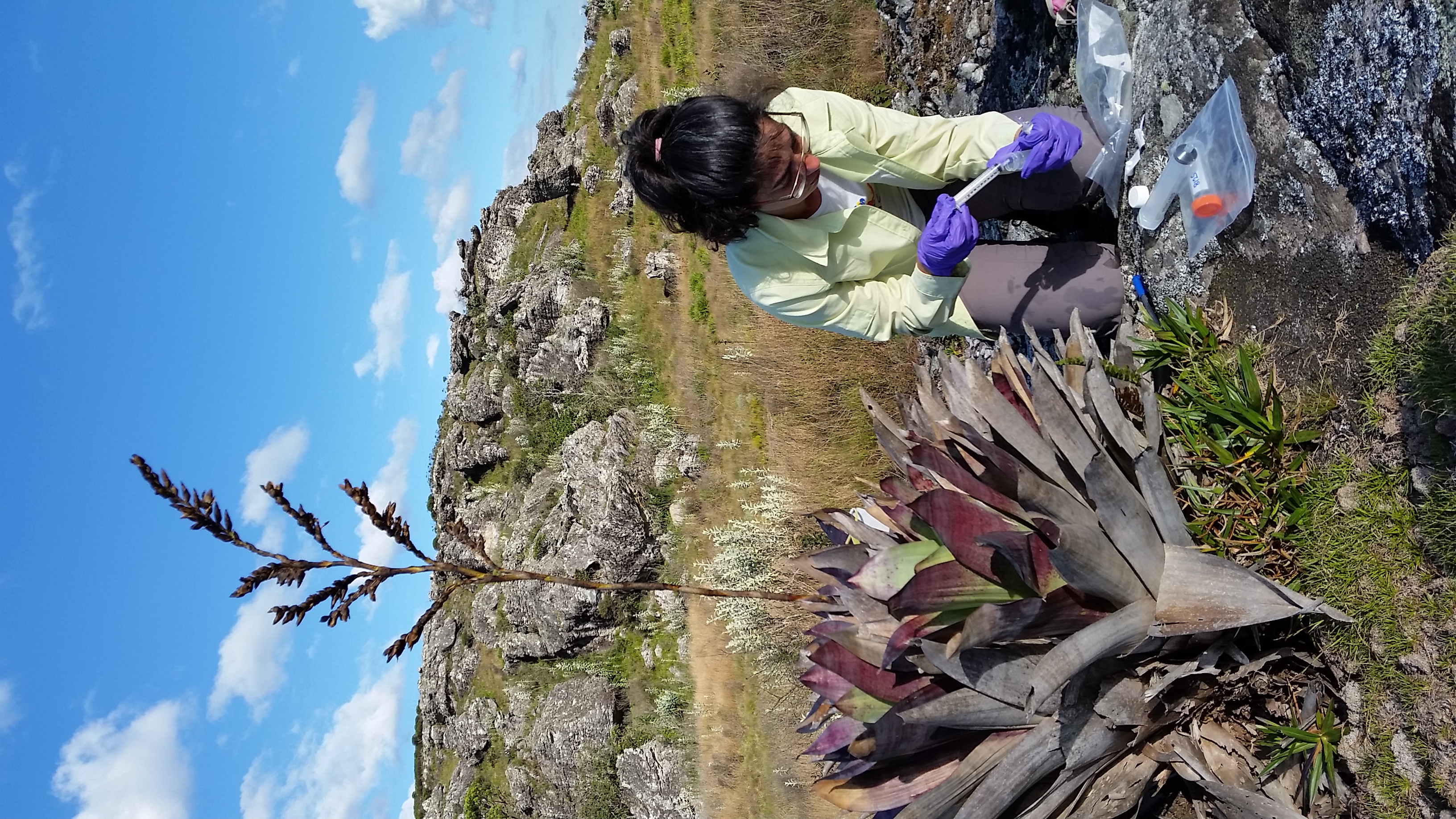By Izabela M Barata, Durrell Wildlife Conservation Trust
Bromeligenous frogs spend their whole life cycle within bromeliads, where they lay their eggs and develop into adult life. Species are mostly restricted to single locations and some can be found at high elevation sites. Their ecology, natural history and distributions are poorly understood, and their dispersal capabilities are still unknown. Crossodactylodes itambe exclusively lives within ground bromeliads which are found on high elevation rocky outcrops, in a single location in the Espinhaço Mountain Range of Brazil. Species occupancy increases at higher elevation and abundance of individuals is related to bromeliad structure, such as plant size and the volume of water retained by the central tank. Estimated species extent of occurrence is 0.5 km2 and there are worrying signs of a declining population trend at lower elevations where fire is still a pressing threat. The restricted range and habitat requirements for C. itambe make this species highly vulnerable to extinction from climate change, wildfires or disease, and therefore a priority for conservation monitoring. Given cur- rent knowledge and threats, species was recently classified as Critically Endangered.
Durrell’s Field Programmes Officer Bela Barata, in collaboration with researchers from Instituto Biotrópicos, University of Kent, Zoological Society of London’s Institute of Zoology, and Amphibian and Reptile Conservation Trust, published a paper aiming to investigate the feasibility of environment DNA (eDNA) for detecting Crossodactylodes itambe (Barata et al. 2021), with a view to applying the method more widely to amphibians that are cryptic and restricted to small water bodies. Despite the increasing use of environmental eDNA analysis to survey species in ponds, rivers, and lakes, very few studies have attempted to use eDNA for the detection of species using very small water bodies such as those accumulated in bromeliads. With funds from The Rufford Foundation, the authors collected water samples from 21 bromeliads for which observational data from direct visual surveys were also available. The authors compared occupancy estimated from direct observations (using a single season occupancy model) with the results from quantitative realtime PCR based eDNA assays. They applied a novel Bayesian occupancy model to estimate occupancy from eDNA samples, as well as false positives and false negatives at different stages of the workflow. eDNA from bromeliad tanks provided reliable estimates, with very low error levels and improved detection when com- pared to detectability from direct observation. Overall, estimated occupancies using eDNA and visual survey methods were similar. The method is therefore feasible for species restricted to small water bodies that are exposed to direct UV radiation.
The authors concluded that there are advantages in the use of eDNA to survey cryptic species in remote locations, and to identify species presence with high detectability and low error rates. eDNA analysis provides a viable alternative to destructive sampling of bromeliads or direct observation methods that require logistically challenging repeated observations. However, the use of eDNA method for monitoring occupancy of bromeliad dwelling species will likely improve as the method becomes more cost-effective and we have a better understanding of the factors affecting detection probability in such environments.

